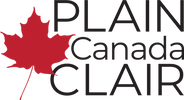Adapted with permission from a training program developed by Michelle Boulton, 3c publications
You’ve been invited to provide a quote for a plain language rewrite. If you’re like most of us, you are excited by the project, but the excitement quickly shifts to apprehension. How do you make your estimate accurate so that the work will be profitable?
Productivity rates
It is hard to predict how fast a plain language editor and writer can work. Plain language editing includes substantive, structural and stylistic editing, copyediting, and proofreading. Plus, plain language editing involves audience testing and revision stages, which may not be part of a traditional edit.
Editors Canada’s Professional Editorial Standards define what is expected of Canadian editors and the criteria against which their knowledge, skills, and practices can be measured. For example, they suggest typical times based on the type of editing and the type of document – standard, difficult, or specialized.
When asked to submit a quote, I will ask for a sample of the work to be edited to determine how much work is required to complete the plain language process. Considerations include:
- Audience—is the primary audience clear? Who is the significant audience? Secondary audience? How many personas will I need to build?
- Purpose—what is the purpose of the material? Is the purpose clear? If it is unclear, I build in time to write heuristics and discuss the purpose with the client.
- Writing—does the original include a lot of jargon? How many terms will need to be explained, how much research will I need to do?
- Structure—will the information need to be reorganized to meet the audience needs?
If I feel the material is difficult or specialized, I estimate at least 1 to 2 hours per page (standard editing definition is 250 words); if the edit looks like a standard edit, I estimate at least 1 to 2 hours for 4 to 5 pages. At this stage of the process, I clarify what is expected of me. As a plain language editor and writer, being clear on the scope of the project is critical and it will help prevent “scope creep” as the project progresses.
Administrative tasks
Next, I build in time for the following administrative tasks:
- Meeting with the client / author – in person, through Zoom/Microsoft Team or by telephone. If the meetings are in person, build in travel time.
- Creating and responding to emails.
- Creating / maintaining a style sheet – you will create a style sheet even if the client has given you their Style Guide.
Pulling it all together
Using these considerations, estimate the time you will need. Experienced editors have suggested that once you have your estimate, multiply that time by 1.5 or even 2. Their advice works! Over time you will become more confident in your estimates – don’t sell yourself short. Your client will respect your expertise.
